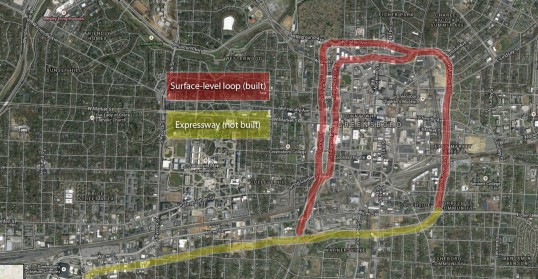This is a really great post and I love anything that will push locals to know more about the history of there they live. That’s always been important to me wherever I’ve lived. But there are a couple of factual issues I must address because I’m OCD that way. I’m posting this here where a maximum of twelve people will ever read it because there doesn’t seem to be a comments option on the article (EDIT: There actually is a comments option but it doesn’t show up in the mobile version and also involves Facebook platform apps).
It’s kind of a stretch to suggest that Glenwood was ever the “center” of high-end shopping and social activity in Greensboro and to compare it to Friendly Center. Glenwood was, at best, a nice streetcar suburb with a small neighborhood shopping area, most of which still stands (albeit in some disrepair) along Grove Street. Similar districts still exist on Tate Street by UNCG, at Walker and Elam Avenues, and other areas. It was more analogous to today’s small shopping center with a grocery store and a drug store (think Golden Gate, for example) than to a major shopping area like Friendly Center. There was, I believe, a popular recreational area in Glenwood as well.
Also, the downtown bypass was not really a precursor to the Greensboro beltway; they were both planned around the same time and were to have coexisted. The one downtown just got funded and constructed several decades earlier. If I’m not mistaken, most of it was built more or less as planned, with Murrow Boulevard feeding into paired one-way streets (Fisher and Smith, then Edgeworth and Spring) to create a surface-level “loop” bypass. The part that was not constructed (and it’s probably a good thing) was the southern leg that was to be built as a major expressway, running parallel to Lee Street all the way to the Coliseum area. This part was scrapped for lack of demand and funds in the 1970s. The big mound of dirt and awkward traffic pattern at Lee Street and Murrow Boulevard live on as a reminder of the interchange that would have been there.
Last but not least, it’s “O. Henry”, not “O’Henry”.
So ends my unsolicited history lesson for the day…

